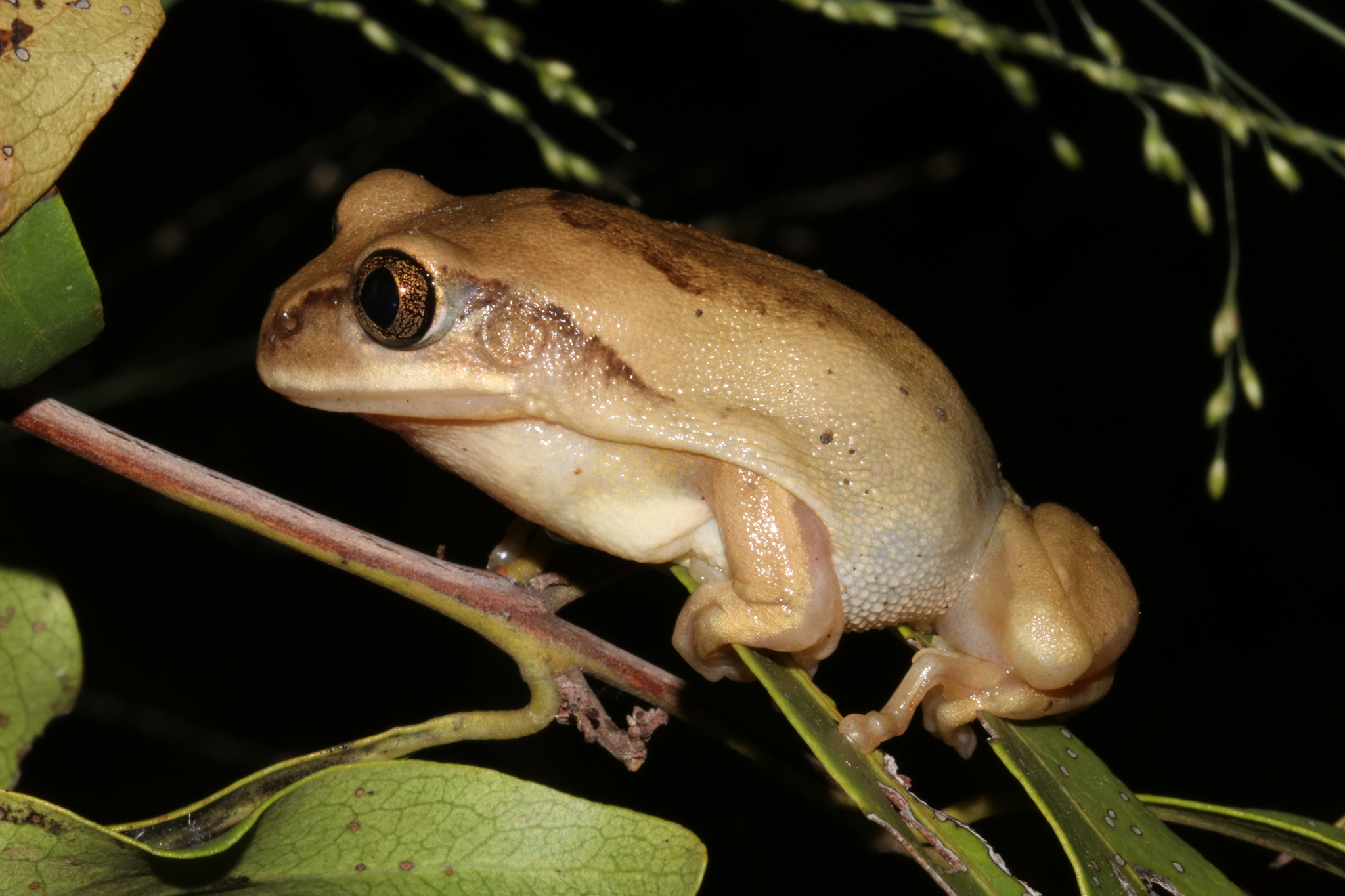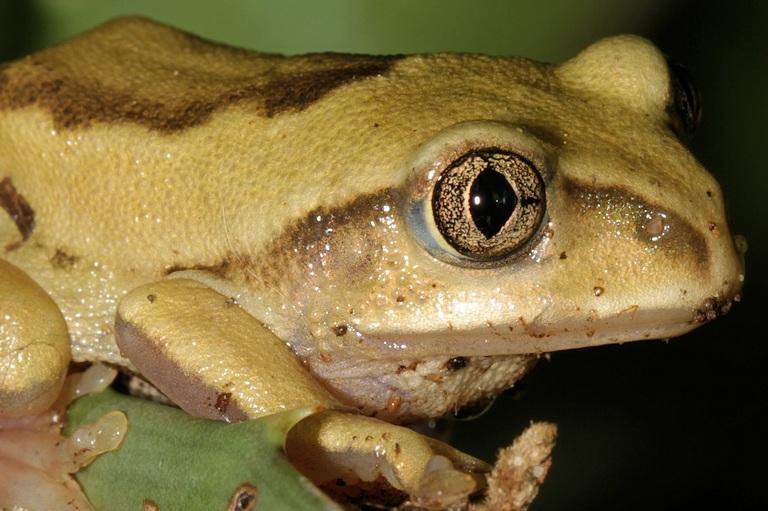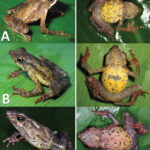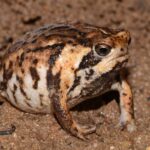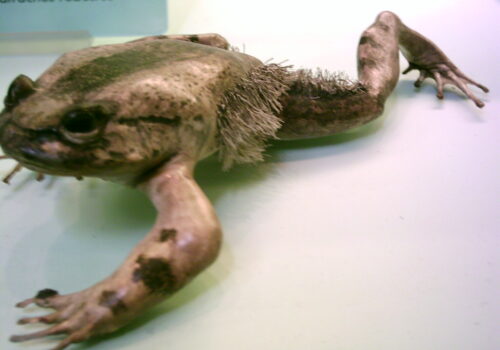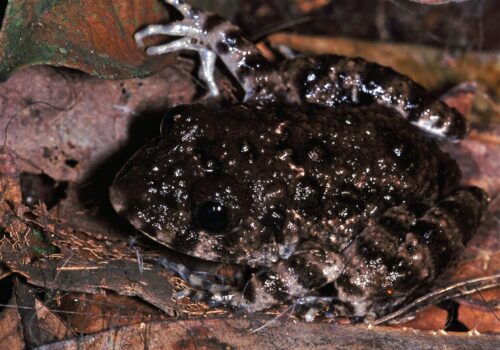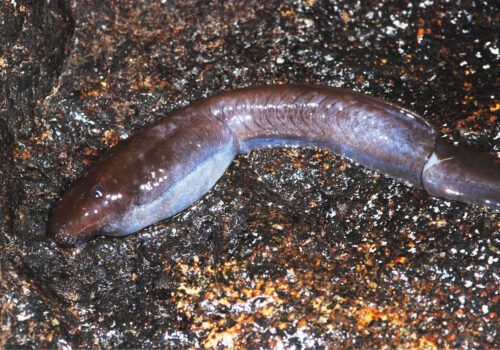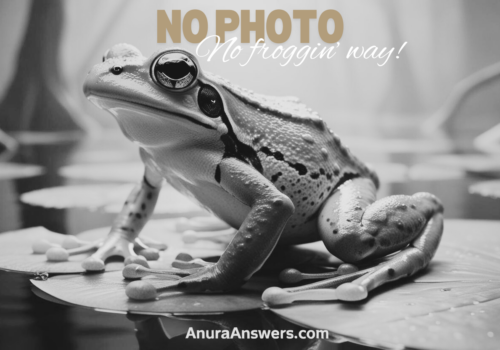- Leptopelis mossambicus: Discovering Mozambique's Elusive Tree Frog
- Taxonomy and Classification: Finding a Home within Diversity
- Natural Habitat: Beneath Mozambique's Green Canopies
- Physical Characteristics: Subtle Beauty of the Mozambique Tree Frog
- Behavior and Life Cycle: An Elaborate Dance of Survival
- Ecological Role: Guardians of Ecosystem Balance
- Threats and Conservation Status: Protecting a Fragile Existence
- Cultural and Scientific Significance: Bridging Nature and Community
- Conclusion: Inviting Conservation through Understanding
Leptopelis mossambicus: Discovering Mozambique’s Elusive Tree Frog#
On a misty evening in Mozambique, as twilight blankets the thickets and wetlands, a gentle chorus rises from the foliage. Amidst the rustling leaves and the serenade of insects emerges a melodious call, textured and rhythmic, drifting effortlessly through the warm, humid air. This enchanting sound is the unmistakable voice of Leptopelis mossambicus, a captivating tree frog that thrives quietly beneath the African stars, undisturbed by the world bustling beneath its leafy abode.
This distinctive amphibian, known commonly as the Mozambique Tree Frog, symbolizes the mystery of the Mozambican wildlands, quietly navigating tropical forests, humid savannahs, and marshy outskirts with an elegance known only to those who tread softly through nature’s tapestry. Although they aren’t Africa’s most famed wildlife ambassadors, these frogs are vital ecological sentinels, alerting scientists and conservationists alike to changes affecting their precious habitats. Their intriguing biology, elusive nature, and ecological significance make the Mozambique Tree Frog worthy of our deeper exploration and understanding.
Taxonomy and Classification: Finding a Home within Diversity#
Leptopelis mossambicus belongs to the family Arthroleptidae, nestled comfortably within the Genus Leptopelis, which hosts a rich diversity of African tree frogs known for their arboreal lifestyles and distinct vocalizations. Described scientifically by Poynton in 1985, the Mozambique Tree Frog shares its lineage closely with species like Leptopelis flavomaculatus and Leptopelis argenteus, all celebrated for their vibrant coloration, delicate beauty, and essential ecological roles across Africa’s verdant landscapes.
The Arthroleptidae family harbors unique amphibians cherished for their agility within forest canopies and rain-soaked understories. While Leptopelis mossambicus might not exhibit strikingly bold coloration seen in relatives of other regions, its subtle elegance and adaptation to local habitats showcase an entirely different form of beauty, reflecting the nuanced equilibrium of its native ecosystems.
Natural Habitat: Beneath Mozambique’s Green Canopies#
The Mozambique Tree Frog inhabits regions predominantly within central to southern Mozambique, though populations are also known to advance into adjacent territories such as southeastern Zimbabwe and eastern South Africa. Their preferred environment ranges from lush temperate forests and tropical woodlands to subtropical dry savannas and seasonally inundated marshes—each area providing distinct advantages in humidity, shelter, and sustenance required by this arboreal frog.
In these habitats, moisture holds the key—dense foliage retains vital humidity, fostering ecosystems ideal for these amphibians. The frogs frequently inhabit low branches, shrubs, and tall grasses lining streams and ponds. Seasonally wet grasslands and flooded meadows adjacent to permanent water bodies offer prime breeding grounds for this delicate species, highlighting a sensitive connection between habitat characteristics and reproduction success.
Stepping softly through such environments after a warm rain reveals flickers of movement, gentle rustlings concealed within foliage, and the soothing rhythm of their trilling chorus—evidence of Leptopelis mossambicus‘s healthy and vibrant populations.
Physical Characteristics: Subtle Beauty of the Mozambique Tree Frog#
Leptopelis mossambicus embodies elegance through subtle charm rather than flamboyant spectacle. Adults typically measure approximately 35 to 50 millimeters, roughly the length of an adult human thumb. Their beauty lies predominantly in their camouflaged form, displaying a range of earthy tones such as delicate browns, mossy greens, and subdued greys dotted with occasional darker patterns. These nuanced shades allow the frogs to blend meticulously with their leafy surroundings—an evolutionary feature protecting them from predatory eyes scanning the foliage.
A closer inspection reveals beautifully proportioned limbs, long digits tipped with slight adhesive pads crucial for arboreal life. Their slightly granular skin texture aids further in maintaining moisture retention, a vital adaptation within environments prone to seasonal changes and fluctuating humidity levels. Large, expressive eyes adorned with golden irises grant excellent nocturnal sight, facilitating nighttime navigation, hunting prowess, and recognition among peers during mating rituals.
Behavior and Life Cycle: An Elaborate Dance of Survival#
Feeding Habits: Quiet Predators Among Leaves#
Active mainly after dusk, these tree frogs manifest stealthy hunting behaviors. Perched motionless on branches or foliage layers, they patiently await their prey—comprising primarily small insects such as moths, flies, ants, beetles, and even spiders passing unsuspectingly close. Quick strikes guided by acute nocturnal vision and surprising agility bring nourishment swiftly and efficiently. In this quiet nocturnal pursuit, the frogs help regulate insect populations and ensure a balanced ecosystem within their habitats.
Mating Rituals and Vocal Expressions#
During the onset of rainy seasons, from November to March, males gather around shallow water pools or suitable breeding grounds, calling melodiously to attract females. Their mating calls—gentle trills and elongated melodic sequences—resonate through the night, forming acoustic signatures unique to this species. Females respond selectively to these vocal performances, ultimately choosing mates based on call quality, territory, and vocal prominence.
Post mating, females deposit clusters of eggs near temporary water bodies—often wrapped gently among submerged vegetation or positioned beneath damp, protective foliage. Upon hatching, tadpoles begin their remarkable aquatic journey, feeding chiefly on algae and organic detritus, maturing relatively rapidly into juvenile froglets. Their metamorphosis signals a new chapter as they transition back into canopy life, repeating the survivalist narrative established through countless generations.
Ecological Role: Guardians of Ecosystem Balance#
Leptopelis mossambicus, while diminutive and often overlooked, holds significant ecological value within its range. As insectivores, their consistent predation helps maintain insect populations under control, indirectly benefiting agricultural communities by curbing pest proliferation within farming peripheries. Simultaneously, these frogs act as vital prey items for numerous predatory birds, snakes, and mammals within Mozambican habitats, integrating seamlessly into intricate food webs that sustain biodiversity.
Furthermore, as sensitive indicators of environmental change, habitat degradation, and pollution, their presence or absence serves as an early-warning ecological gauge for detecting adverse environmental conditions, offering researchers crucial insights into broader ecosystem health.
Threats and Conservation Status: Protecting a Fragile Existence#
Currently, the International Union for Conservation of Nature (IUCN) categorizes the Mozambique Tree Frog as Least Concern, reflecting relative population stability within its natural range. However, emerging threats emphasize the necessity of vigilance. Habitat destruction through agriculture expansion, logging activities, urbanization, and water contamination from pesticide runoff impose significant pressure. Climate change, causing erratic rainfall patterns and altered humidity levels within ecosystems, poses additional risks, impacting breeding cycles and tadpole survivability.
Local conservation groups and researchers emphasize protective initiatives, such as sustainable agricultural practices, community awareness programs about pesticide usage, and habitat preservation efforts. These targeted actions, combined with careful ongoing monitoring, offer hopeful avenues toward preserving healthy—and vocal—frog populations.
Cultural and Scientific Significance: Bridging Nature and Community#
In communities across Mozambique and neighboring regions, amphibians like Leptopelis mossambicus embody symbols of ecological richness and harmony. Traditional folklore depicts frogs as messengers signaling imminent rains—a vital connection for agricultural societies reliant upon seasonal precipitation. Scientifically, frogs of this genus contribute profoundly to amphibian research focused on vocalization studies, environmental health assessments, and climate change impacts on terrestrial-aquatic ecosystems.
Conclusion: Inviting Conservation through Understanding#
As we conclude our journey, it becomes compellingly clear that the enigmatic Leptopelis mossambicus deserves our attentive appreciation. Beyond their quietly charming presence and melodic calls lies invaluable ecological importance and remarkable biological adaptations. Their subtle existence symbolizes the broader story of biodiversity preservation, resonating deeply with conservationists, naturalists, and communities sharing landscapes rich with their melodies.
May this glimpse into their lives inspire us towards protection and stewardship of ecosystems that cradle such exceptional creatures. Take action, support local conservation efforts, embark on further discovery, and appreciate these frogs not just as animals sustained by the forests, savannahs, and marshes—but as threads within nature’s intricate tapestry. In preserving their habitats, we protect the harmony of an interconnected world reverberating with life, wonder, and nature’s perpetual resilience.







